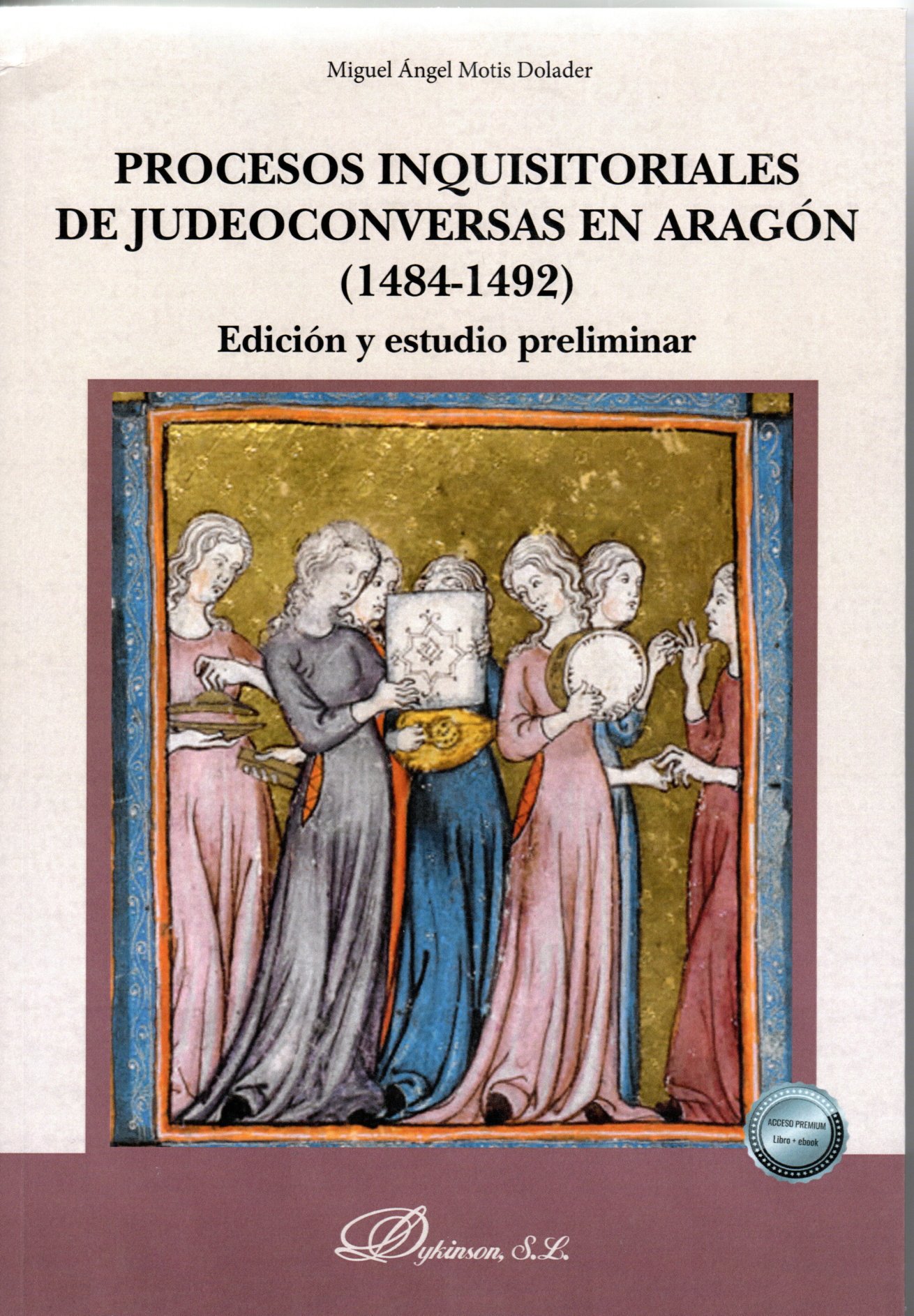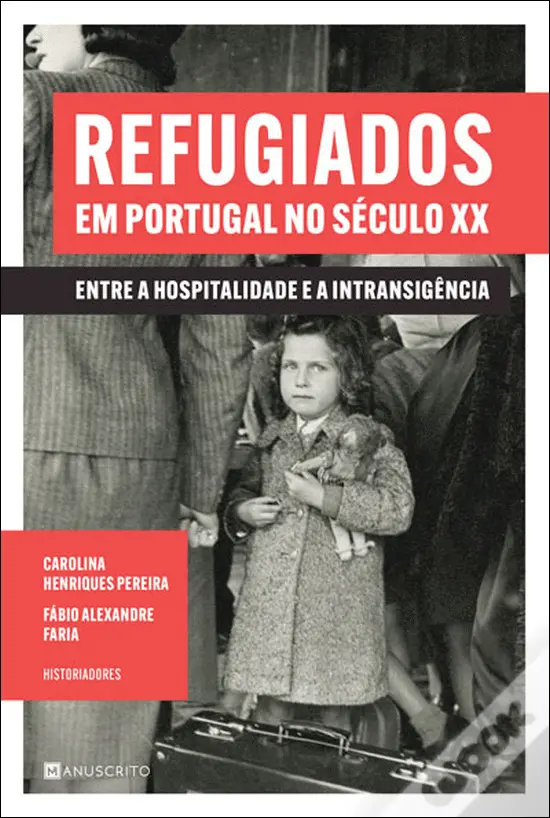
Books
New acquisitions / incorporations

Deborah Simonton (2023). Gender in the European Town. Ancien Regime to the Modern. London: Routledge. 416 pp.
Abstract
Moving from the mid-seventeenth century to the near present, this book marks physical and conceptual changes across European towns and examines how gender was implicated and imbricated in those changes.
As places which fostered and disseminated key social, economic, political and cultural developments, towns were central to the creation of gendered identities and the transmission of ideas across local, national and transnational boundaries. From 1650 to 2000, towns grew rapidly and responded to the needs for new infrastructures, physical reconfiguration and ideas of citizenship. Gender relations vary over space and time and are continually altering; such variation underlines the need for a thorough non- or even anti-essentialism. Drawing primarily on three themes of economy, civic identity and uses of space, the volume shows that urban development, and responses to it, is not gender neutral and thus argues for the fundamental importance of a gendered perspective.
Gender in the European Town is a useful resource for all students and scholars interested in urban history and its interaction with gender from 1650 to the present.
CHSC library reference: 27-6-8

Michele Campopiano (2025). Storia dell’ambiente nel Medioevo. Natura, società, cultura. Roma: Carocci Editore. 176 pp.
Abstract
Nel Medioevo la vita era indissolubilmente legata alla natura, la cui percezione era però in continuo movimento. Piante, animali, corsi d’acqua: tutto l’ambiente era modificato dall’agire degli esseri umani, e a loro volta le trasformazioni della natura influenzavano la vita delle comunità. Il libro indaga questi mutamenti in relazione ai cambiamenti economici e sociali. Analizza come in quel periodo l’idea stessa di natura si sia modificata in relazione alle pratiche di sfruttamento dell’ambiente e alle trasformazioni ecologiche. Riflette sulle categorie culturali che definivano i confini tra l’umano e l’animale e tra il naturale e il soprannaturale. Esplora il modo in cui la cultura medievale rappresentò le interazioni fra società e ambiente e la posizione dell’essere umano nel cosmo.
CHSC library reference: 27-6-12
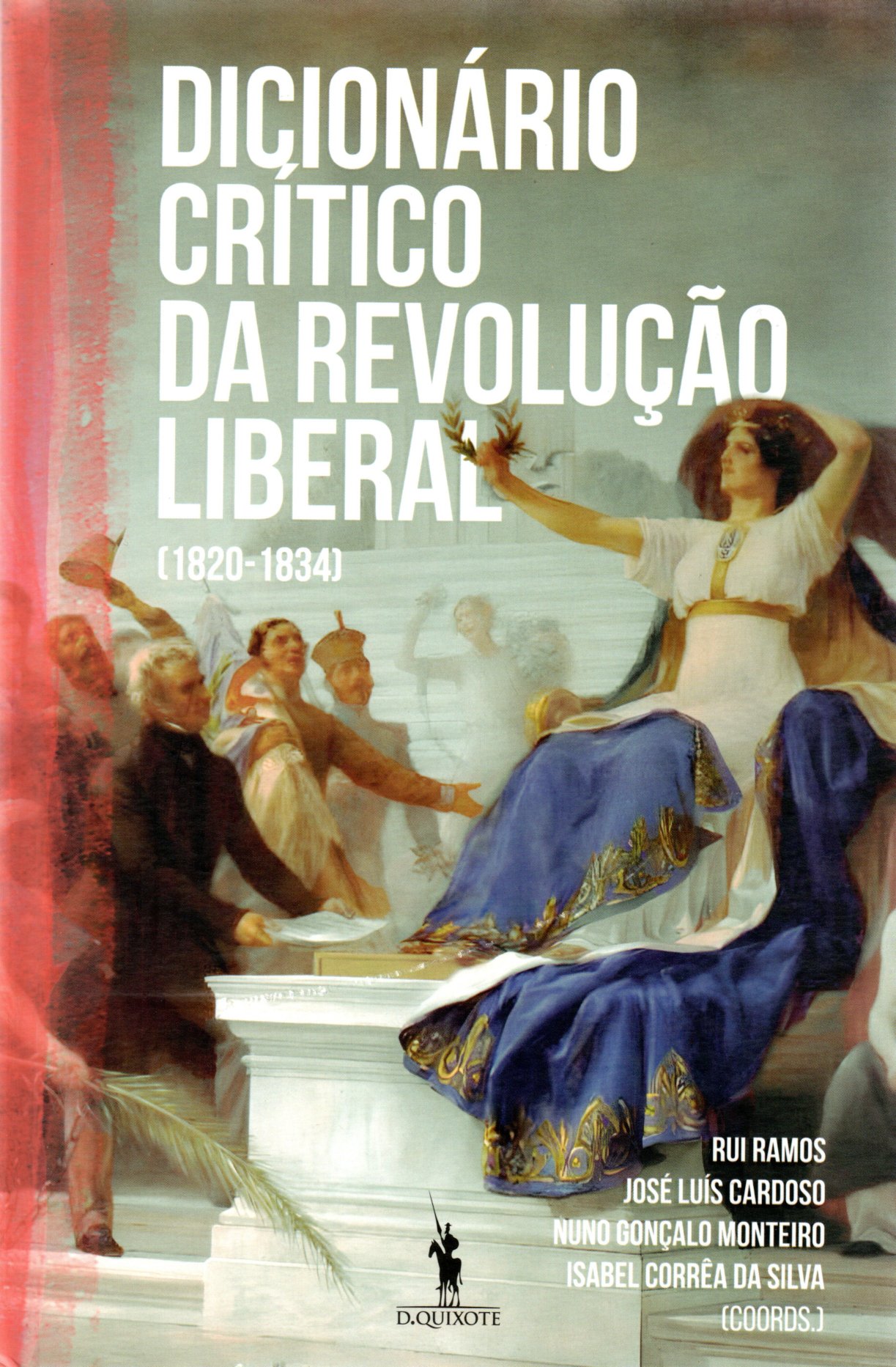
Isabel Corrêa da Silva, José Luís Cardoso, Nuno Gonçalo Monteiro, Rui Ramos (2025). Dicionário Crítico da Revolução Liberal (1820-1834). Lisboa: Dom Quixote. 1656 pp.
Abstract
«Em 2020 passaram 200 anos sobre o levantamento militar no Porto, que deu origem ao que depois se chamou a “revolução liberal”. Em meados do século XIX, o historiador Alexandre Herculano considerou-a a maior mudança política e social em Portugal desde a Idade Média. No século XX, a historiografia predominante tendeu a subestimar o impacto dos governos liberais e a exagerar todo o tipo de continuidades entre o Antigo Regime do século XVIII e o novo Estado Liberal do século XIX. Nos últimos quarenta anos, porém, a intensificação da investigação histórica, quer sobre o Estado Liberal, quer sobre o Antigo Regime, ajudou a reconsiderar a revolução liberal e restaurou, até certo ponto, a ideia de Herculano de que se tratou de uma enorme transformação política, cultural e social, e uma profunda rutura com o que tinha sido o passado português, e que como tal deve ser considerada no conhecimento e na memória histórica. É essa grande mudança histórica que pretende abarcar este Dicionário Crítico da Revolução Liberal (1820-1834).»
CHSC library reference: 27-6-4
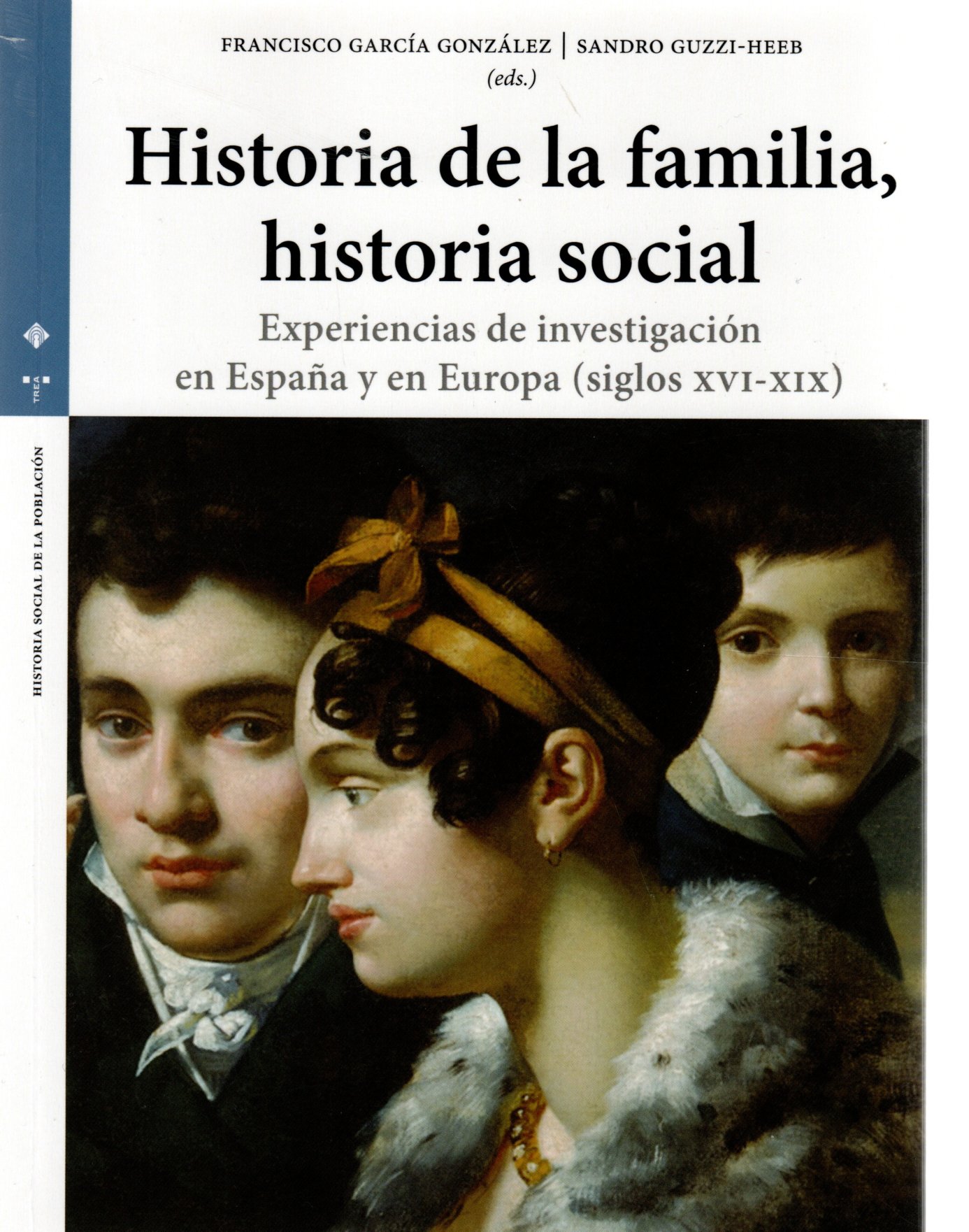
Francisco Garcia Gonzalez, Sandro Guzzi-Heeb (2023). Historia De La Familia, Historia Social. Experiencias de investigación en España y en Europa (siglos XVI-XIX). Ediciones Trea, S.L., Ediciones de la Universidad de Castilla-La Mancha. 808 pp.
Abstract
La historia de la familia como campo de investigación nació a principios de los años sesenta del siglo XX y desde entonces ha experimentado una importante evolución que ha modificado tanto su contenido como su orientación. Esta obra colectiva ofrece un balance de este ámbito de estudio en España y en varios países europeos incidiendo en sus particulares avances, así como en la riqueza y en la diversidad de sus enfoques actuales. Con la intención de fomentar el intercambio de planteamientos y de la transmisión de conocimientos referidos a diferentes territorios, el libro presenta una amplia muestra de experiencias de investigación entre los siglos XVI y XIX que constituyen una excelente expresión del desarrollo de la historia social en Europa a partir de los estudios de historia de la familia. La mayor atención prestada a la dimensión social de los fenómenos que concurren en ella ha supuesto multiplicar su potencialidad para la explicación y comprensión de las sociedades del pasado, contribuyendo de manera decisiva a la renovación y al impulso de nuevas formas de hacer historia dentro del panorama historiográfico internacional..
CHSC library reference: 27-6-3

Sylvain Venayre, Pierre Singaravélou (2017). Histoire du Monde au XIXe siècle. Paris: Fayard. 740 pp.
Abstract
En Europe et dans les Amériques, le XIXe siècle a longtemps été défini comme l’époque de la «modernité», quand le rêve du progrès se mêlait à l’idée de révolution, et le désir de nouveauté à l’angoisse de l’accélération. Mais qu’en est-il lorsque, abandonnant l’étalon de l’Occident et optant pour l’échelle du monde, on change de point de vue?
Ce livre, «monstrueux et discordant», pour reprendre les mots par lesquels Michelet désignait sa propre Histoire du XIXe siècle, veut faire entendre les voix d’un passé pluriel. Car le monde est avant tout l’objet d’expériences contrastées pour ceux qui y vivent, et auxquelles cette somme convie le lecteur.
Elle le guide à travers les circulations de cette ère nouvelle, des migrations à l’expansion coloniale, conséquences des mutations rapides des transports, de l’industrie ou des sciences. Et à y regarder de près, on s’aperçoit que la mondialisation ne fut pas un processus univoque d’occidentalisation.
Elle le conduit au fil des «temps du monde» scandés par des événements qui résonnèrent à l’échelle globale, de l’indépendance d’Haïti (1804) à la révolution chinoise (1911), de l’épidémie de choléra (1817) à la révolte des cipayes (1857).
Elle l’entraîne au cœur d’un «magasin du monde» qu’approvisionnent bibelots, cartes, tatouages, fez, ivoire, opium, dévoilant des processus historiques qui affectent le monde entier, tout en installant le lointain dans l’intime et le quotidien.
Elle le transporte dans les «provinces du monde» indienne, sud-américaine, ottomane, européenne, etc., ces laboratoires qui permettent de décentrer notre regard, et révèlent tout autant la grande diversité de la planète que l’existence de «modernités» alternatives.
Attestant à la fois les dynamiques d’intégration mondiale et une exacerbation des identités, cette Histoire du monde au XIXe siècle, qui réunit les contributions de près de cent historiennes et historiens, nous laisse une certitude: celle d’être alors devenus, ensemble, et pour la première fois, contemporains.
CHSC library reference: 27-6-2

Todeschini, G., Piketty, T., Giordano, I., & Arnoux, M. (2017). Les Marchands et le Temple: La société chrétienne et le cercle vertueux de la richesse du Moyen Âge à l’Époque moderne. Albin Michel. 466 pp.
Abstract
The Christian Middle Ages, hostile to money, is often believed to have had no economic thought, as such ideas could only emerge in the secularized world enabled by the Reformation. But what if this widely disseminated belief is false? What if economic processes were at the heart of medieval thought? Listening to monks, bishops, mendicant friars, and academics, Giacomo Todeschini explores the pathways of European thought from Antiquity to the modern era, uncovering an intellectual world deeply engaged with the spiritual, moral, and political questions posed by the circulation of wealth, its creation, distribution, use, and control. The Christian economy he reveals, with its controversies and consensuses, permeates the entire life of the community of the faithful and contributes to the dynamics of exclusion (of Jews, heretics, and the poor) that shaped European society, imbuing it with both solidarity and brutality. This work illuminates the deep connections that united religion and economy, material wealth and spirituality, in medieval societies. In doing so, it speaks to all those seeking to understand why and how an “economic science” was born.
CHSC library reference: 25-6-32

Nieto Sánchez, J. A., Muñoz Navarro, D., & Franch Benavent, R. (2023). Ciudades en movimiento: negocios, trabajo y conflictividad en la sociedad española, siglos XVI-XVIII. Madrid: Marcial Pons, Ediciones de Historia. 432 pp.
Abstract
The hegemony held by the urban world in contemporary society finds its roots in the process of urbanization that unfolded between the 16th and 18th centuries. The growth of political capitals, maritime hubs, and port cities gave rise to large metropolises, which extended their influence over the surrounding rural areas and stimulated the transformation of the social system of the Ancien Régime. The dynamic character of cities during the early modern period constitutes the central focus of this book, which delves into the social transformations brought about by the growth of Madrid and other cities within the Mediterranean area. The studies presented in this work concentrate on three core aspects: the relationship between supply systems, the improvement of urban infrastructures, and the world of commerce; the analysis of labor relations, organizational structures, the reproduction of trades, and the channels for disseminating artisanal knowledge; and the conflicts that emerged both within cities and their areas of influence, examining their diverse typologies and the mechanisms of control and coercion employed to suppress them.
CHSC library reference: 25-6-33

Krass, U. (2023). The Portuguese Restoration of 1640 and Its Global Visualization: Political Iconography and Transcultural Negotiation. Amsterdam: Amsterdam University Press. 508 pp.
Abstract
The Portuguese Restoration of 1640 ended the dynastic union of Portugal and Spain. This book pioneers in reconstructing the global image discourse related to the event by bringing together visualizations from three decades and four continents. These include paintings, engravings, a statue, coins, emblems, miniatures, a miraculous crosier and other regalia, buildings, textiles, a castrum doloris, drawings, and ivory statues. Situated within the academic field of visual studies, the book interrogates the role of images and depictions before, during, and after the overthrow and how they functioned within the intercontinental communication processes in the Portuguese Empire. The results challenge the conventional notion of center and periphery and reveal unforeseen entanglements as well as an unexpected agency of imagery from the remotest regions under Portuguese control. The book breaks new ground in linking the field of early modern political iconography with transcultural art history and visual studies.
CHSC library reference: 25-6-20
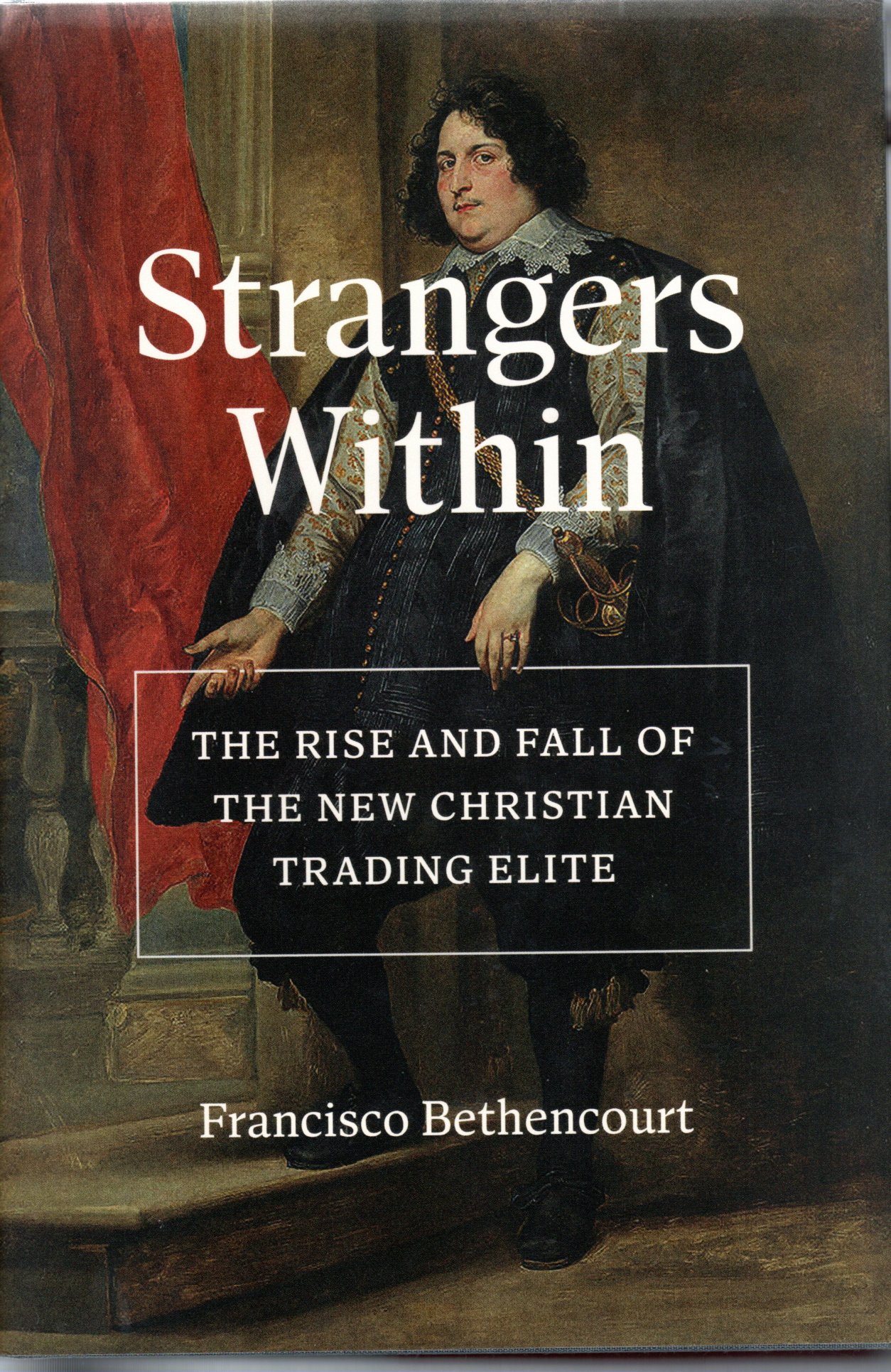
Bethencourt, F. (2024). Strangers Within: The Rise and Fall of the New Christian Trading Elite. Oxford: Princeton University Press. 602 pp.
Abstract
In Strangers Within, Francisco Bethencourt provides the first comprehensive history of New Christians, the descendants of Jews forced to convert to Catholicism in late medieval Spain and Portugal. Bethencourt estimates that there were around 260,000 New Christians by 1500—more than half of Iberia’s urban population. The majority stayed in Iberia but a significant number moved throughout Europe, Africa, the Middle East, coastal Asia and the New World. They established Sephardic communities in North Africa, the Ottoman Empire, Italy, Amsterdam, Hamburg and London. Bethencourt focuses on the elite of bankers, financiers and merchants from the fifteenth to the eighteenth centuries and the crucial role of this group in global trade and financial services. He analyses their impact on religion (for example, Teresa de Ávila), legal and political thought (Las Casas), science (Amatus Lusitanus), philosophy (Spinoza) and literature (Enríquez Gomez).
Drawing on groundbreaking research in eighteen archives and library manuscript departments in six different countries, Bethencourt argues that the liminal position in which the New Christians found themselves explains their rise, economic prowess and cultural innovation. The New Christians created the first coherent legal case against the discrimination of a minority singled out for systematic judicial inquiry. Cumulative inquisitorial prosecution, coupled with structural changes in international trade, led to their decline and disappearance as a recognizable ethnicity by the mid-eighteenth century. Strangers Within tells an epic story of persecution, resistance and the making of Iberia through the oppression of one of the most powerful minorities in world history. Packed with genealogical information about families, their intercontinental networks, their power and their suffering, it is a landmark study.
CHSC library reference: 25-6-23
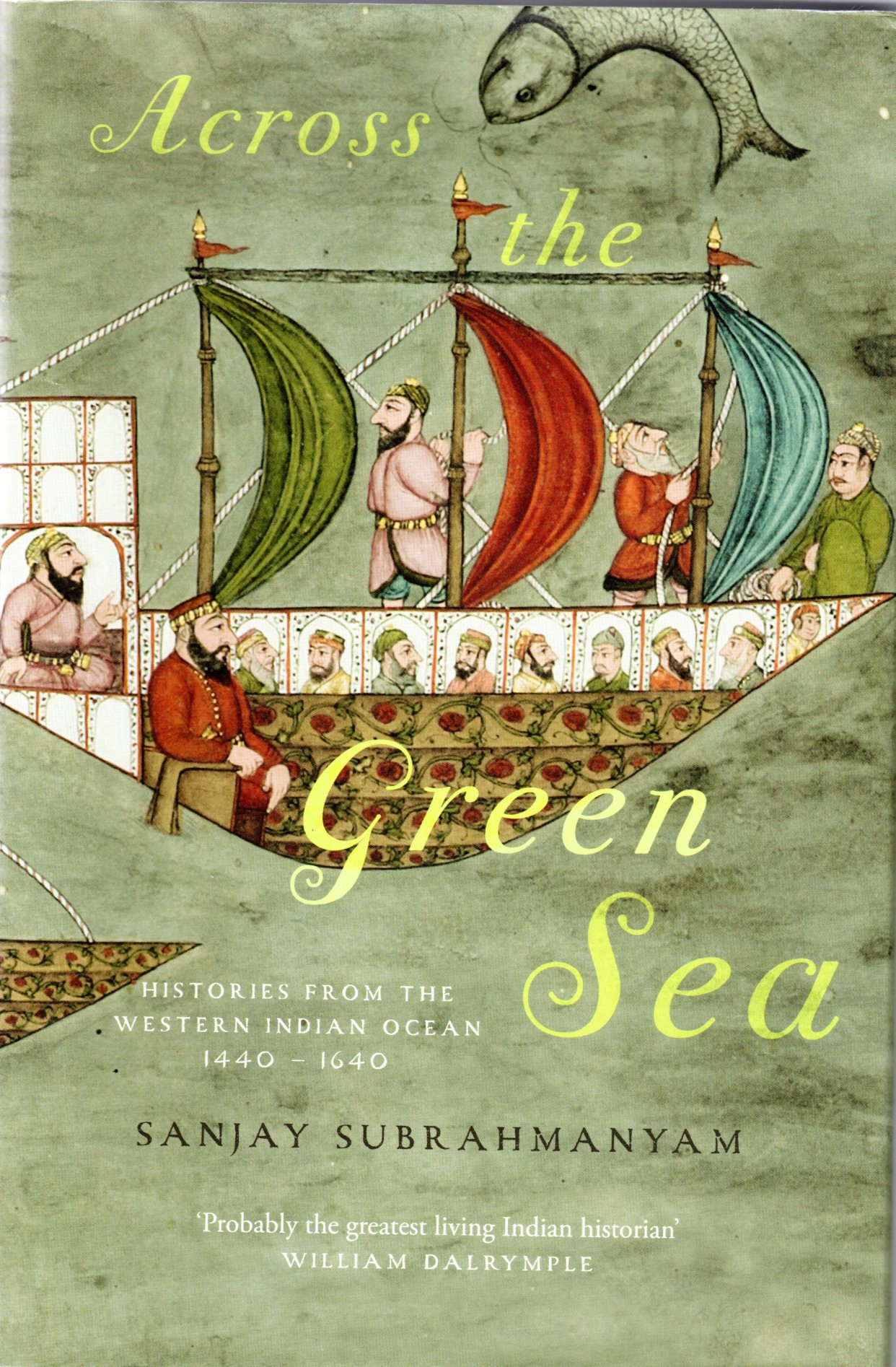
Subrahmanyam, S. (2024). Across the Green Sea: Histories from the Western Indian Ocean, 1440-1640. University of Texas Press.
Abstract
Beginning in the mid-fifteenth century, the regions bordering the western Indian Ocean—“the green sea,” as it was known to Arabic speakers—had increasing contact through commerce, including a slave trade, and underwent cultural exchange and transformation. Using a variety of texts and documents in multiple Asian and European languages, Across the Green Sea looks at the history of the ocean from a variety of shifting viewpoints: western India; the Red Sea and Mecca; the Persian Gulf; East Africa; and Kerala. Sanjay Subrahmanyam sets the scene for this region starting with the withdrawal of China’s Ming Dynasty and explores how the western Indian Ocean was transformed by the growth and increasing prominence of the Ottoman Empire and the continued spread of Islam into East Africa. He examines how several cities, including Mecca and the vital Indian port of Surat, grew and changed during these centuries, when various powers interacted until famines and other disturbances upended the region in the seventeenth century. Rather than proposing an artificial model of a dominant center and its dominated peripheries, Across the Green Sea demonstrates the complexity of a truly dynamic and polycentric system through the use of connected histories, a method pioneered by Subrahmanyam himself.
CHSC library reference: 25-6-15
- Na Teia da Aranha15 November 2024
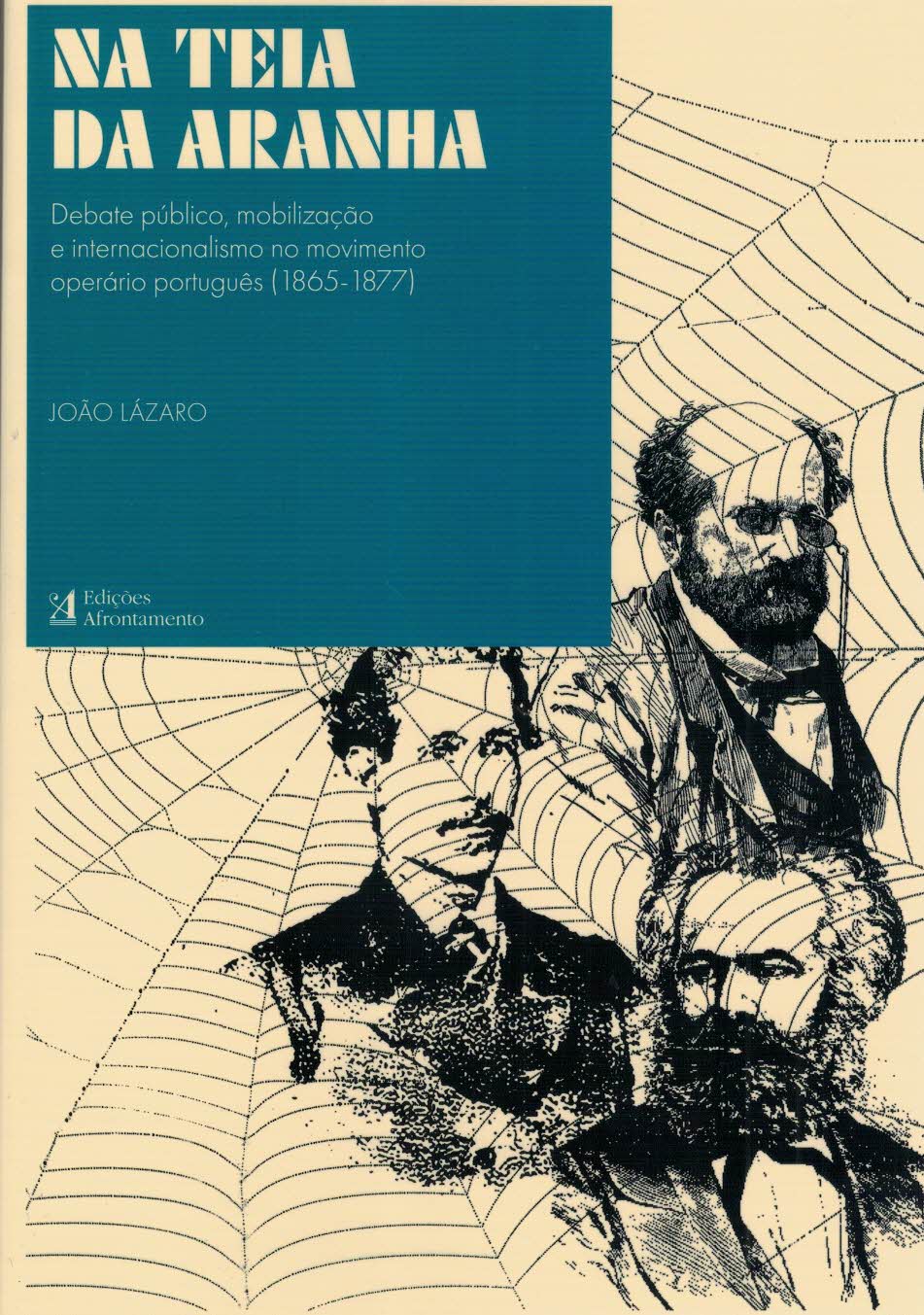
Abstract
By establishing the chronological framework between the First Social Congress (1865) and the First Congress of Socialist Workers of Portugal (1877), João Lázaro successfully identifies the various ruptures and mobilizations within workers’ organizations, their impact on the public sphere, and examines the correspondence between Portugal, Karl Marx, and Engels. The author develops a compelling thesis about the emergence of an internationalist web in Portugal, which poses transnational challenges to socialists. As Professor Fátima Sá emphasizes in the preface: “The book presented here is one that was greatly needed. It was needed by historians working on the 19th century, those studying social movements, and, naturally, those focusing on the labor movement. It was also needed by the so-called ‘general reader,’ or rather, the vast universe of readers outside academia who are interested in the discipline of history in general and in these specific topics in particular, and who are often ignored with Olympian indifference by historians.”
CHSC library reference: 25-6-10
- Compilação de elementos para o estudo da questão de Olivença15 November 2024

SAMPAYO, Luiz Teixeira de (2001). Compilação de elementos para o estudo da questão de Olivença (Perda desta Praça e Diligências para a Reaver). [S.l.]: Grupo dos Amigos de Olivença. 384 pp.
Abstract
This work by Luiz Teixeira de Sampayo (researcher, Ambassador, and Secretary-General of the Ministry of Foreign Affairs) offers a concise yet thoroughly documented account of the efforts undertaken by Portuguese authorities, following the Congress of Vienna, to reclaim possession of the town of Olivença and its surrounding territories, ceded to Spain by the treaty of June 6, 1801. Introduction by Ambassador José Calvet de Magalhães. Documentary transcription, notes, summaries, bibliography, and indexes by Mário Rodrigues. Afterword by Humberto Nuno de Oliveira.
CHSC library reference: 25-6-9
- ‘Black but Human’12 November 2024
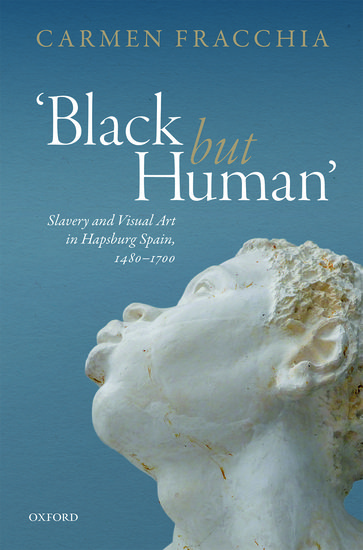
Fracchia, C. (2019). ‘Black But Human’: Slavery and Visual Art in Hapsburg Spain, 1480-1700. Oxford University Press. 232 pp.
Abstract
‘Black but Human’ is the first study to focus on the visual representations of African slaves and ex-slaves in Spain during the Hapsburg dynasty. The Afro-Hispanic proverb ‘Black but Human’ is the main thread of the six chapters and serves as a lens through which to explore the ways in which a certain visual representation of slavery both embodies and reproduces hegemonic visions of enslaved and liberated Africans, and at the same time provides material for critical and emancipatory practices by Afro-Hispanics themselves.
The African presence in the Iberian Peninsula between the late fifteenth century and the end of the seventeenth century was as a result of the institutionalization of the local and transatlantic slave trades. In addition to the Moors, Berbers and Turks born as slaves, there were approximately two million enslaved people in the kingdoms of Castile, Aragon and Portugal. The ‘Black but Human’ topos that emerges from the African work songs and poems written by Afro-Hispanics encodes the multi-layered processes through which a black emancipatory subject emerges and a ‘black nation’ forges a collective resistance. It is visually articulated by Afro-Hispanic and Spanish artists in religious paintings and in the genres of self-portraiture and portraiture. This extraordinary imagery coexists with the stereotypical representations of African slaves and ex-slaves by Spanish sculptors, engravers, jewellers, and painters mainly in the religious visual form and by European draftsmen and miniaturists, in their landscape drawings and sketches for costume books.
CHSC library reference: 25-6-5
- Black Saints in Early Modern Global Catholicism30 September 2024

Rowe, E. K. (2019). Black saints in early modern global Catholicism. Cambridge University Press. 293 pp.
Abstract
From the sixteenth to the eighteenth centuries, Spanish and Portuguese monarchs launched global campaigns for territory and trade. This process spurred two efforts that reshaped the world: missions to spread Christianity to the four corners of the globe, and the horrors of the transatlantic slave trade. These efforts joined in unexpected ways to give rise to black saints. Erin Kathleen Rowe presents the untold story of how black saints – and the slaves who venerated them – transformed the early modern church. By exploring race, the Atlantic slave trade, and global Christianity, she provides new ways of thinking about blackness, holiness, and cultural authority. Rowe transforms our understanding of global devotional patterns and their effects on early modern societies by looking at previously unstudied sculptures and paintings of black saints, examining the impact of black lay communities, and analysing controversies unfolding in the church about race, moral potential, enslavement, and salvation.
CHSC library reference: 25-6-8
- Sacerdotisas voduns e rainhas do Rosário24 September 2024
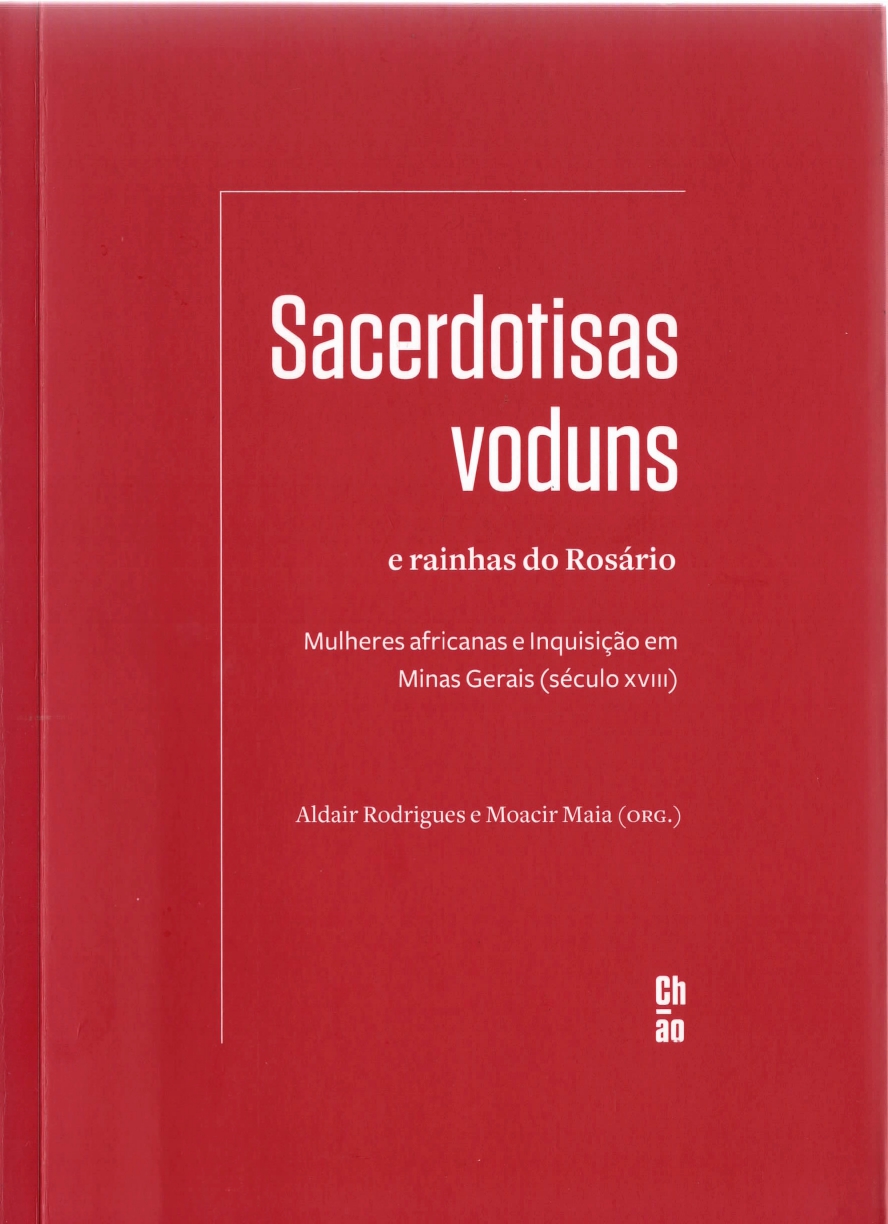
Rodrigues, A., & Maia, M. (Org.)(2023). Sacerdotisas voduns e rainhas do Rosário: Mulheres africanas e Inquisição em Minas Gerais (século XVIII). Chão Editora.191 pp.
Abstract
Sacerdotisas voduns e rainhas do Rosário: mulheres africanas e Inquisição em Minas Gerais (século xviii) reúne transcrições de documentos inéditos sobre a vida e as crenças de mulheres africanas perseguidas no Brasil por forças militares e pela Inquisição. Essas mulheres pertenciam a grupos étnicos que habitavam a região da África ocidental chamada pelos portugueses de Costa da Mina. Escravizadas e trazidas para o Brasil, algumas se tornaram lideranças de comunidades negras na posição de sacerdotisas voduns (vodúnsis), ao mesmo tempo que exerciam cargos de juízas e rainhas da irmandade católica de Nossa Senhora do Rosário dos Pretos — a principal confraria negra mineira. Os manuscritos dos processos contra as sacerdotisas foram localizados em Portugal no Arquivo da Torre do Tombo, entre os códices do Tribunal da Inquisição de Lisboa. O primeiro, de 1747, descreve um complexo culto em Paracatu (mg) dedicado ao “Deus da Terra de Courá”. O segundo e o terceiro referem-se a Ângela Gomes, “mestra” de práticas rituais africanas na comarca de Ouro Preto, coroada como rainha do Rosário. O quarto, datado de 1759, oferece detalhes sobre as práticas de Teresa Rodrigues e Manoel mina na comarca de Sabará. Sacerdotisas voduns e rainhas do Rosário inclui também papéis preservados nos arquivos históricos de Minas Gerais. Embora registrados por agentes do Império português, os depoimentos reproduzidos nos processos desvelam a multiplicidade de vozes e das trajetórias de vida das mulheres africanas, evidenciando a ideologia e a violência do racismo religioso.
CHSC library reference: 25-6-4
- The Oxford History of Witchcraft and Magic24 September 2024
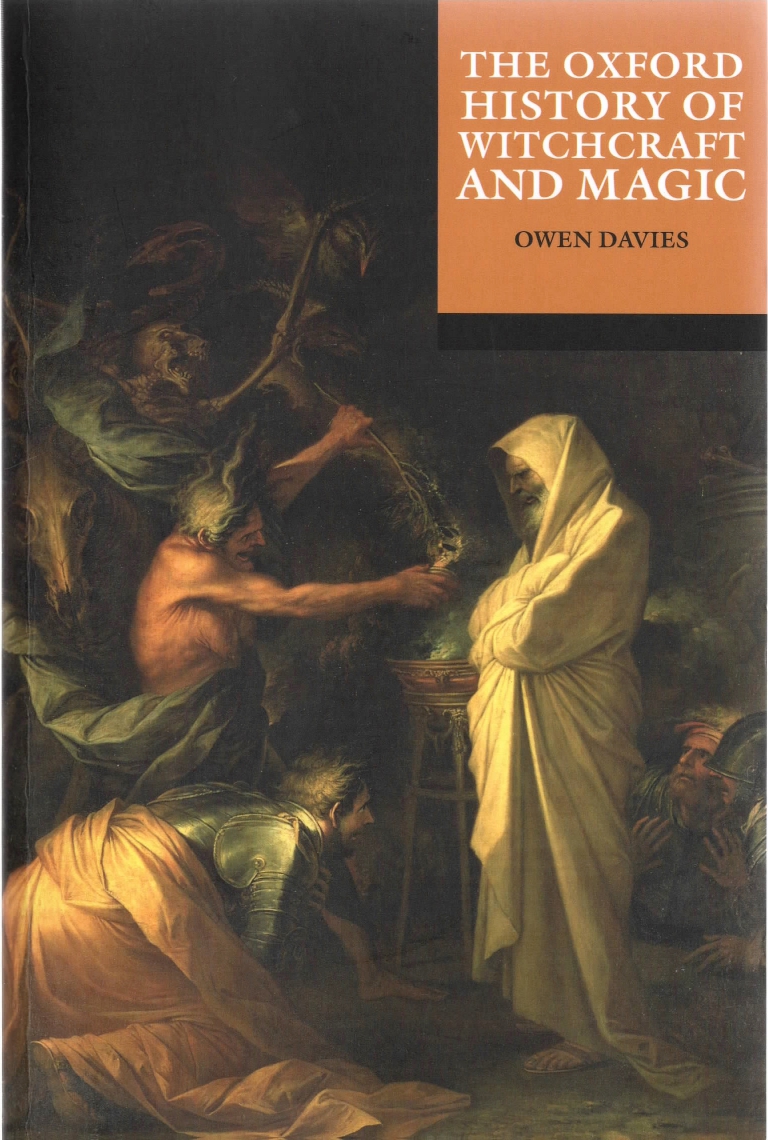
Davies, O. (Ed.). (2023). The Oxford History of Witchcraft and Magic. Oxford University Press. 325 pp.
Abstract
This history provides a readable and fresh approach to the extensive and complex story of witchcraft and magic. Telling the story from the dawn of writing in the ancient world to the globally successful Harry Potter films, the authors explore a wide range of magical beliefs and practices, the rise of the witch trials, and the depiction of the Devil-worshipping witch. The book also focuses on the more recent history of witchcraft and magic, from the Enlightenment to the present, exploring the rise of modern magic, the anthropology of magic around the globe, and finally the cinematic portrayal of witches and magicians, from The Wizard of Oz to Charmed and Buffy the Vampire Slayer.
CHSC library reference: 25-6-3
- Sustentabilidade: um desafio coletivo24 September 2024
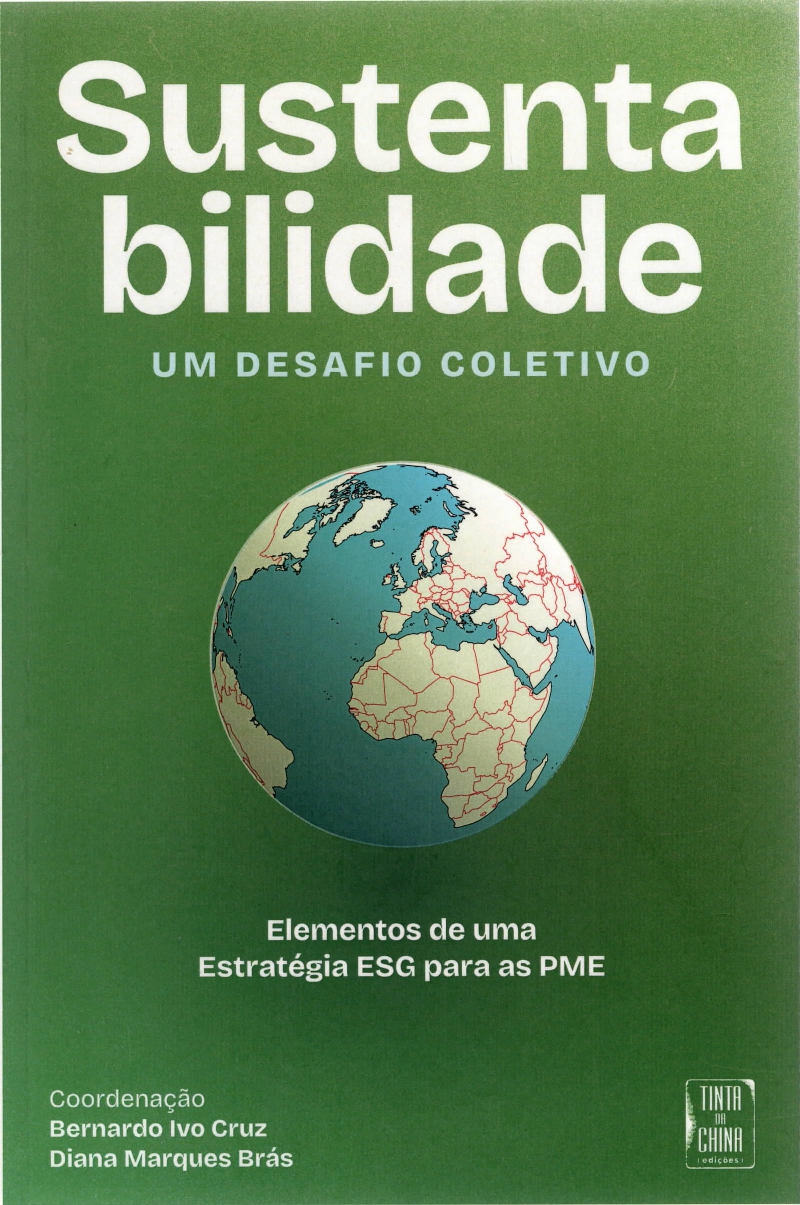
Cruz, B. L.; BRÁS, D. M. (2024). Sustentabilidade: um desafio coletivo. Lisboa : Tinta da China. 232 pp.
Abstract
The Portuguese business fabric, comprised mainly of small and medium-sized enterprises (SMEs), directly employs around 80% of the workforce in Portugal. Due to the various pressures it faces, this sector must become the key driver of cooperation and mutual support to achieve more sustainable development. A more prosperous country, capable of creating greater wealth, ensuring equity, and promoting a new model of economic, social, and environmental development that guarantees a healthy future for upcoming generations, can only be realized through a collective effort. This includes governments, the scientific community, businesses, citizens, civil society movements, and investors. Businesses are called upon to position themselves to ensure greater market adaptability, increased responsibility, competitiveness, and a commitment to serving their stakeholders — shareholders, customers, employees, consumers, and the communities in which they operate. These are some of the foundational elements of an ESG (Environmental, Social, and Governance) Strategy for SMEs, which this publication seeks to present.
CHSC library reference: 25-6-2

Abstract
By establishing the chronological framework between the First Social Congress (1865) and the First Congress of Socialist Workers of Portugal (1877), João Lázaro successfully identifies the various ruptures and mobilizations within workers’ organizations, their impact on the public sphere, and examines the correspondence between Portugal, Karl Marx, and Engels. The author develops a compelling thesis about the emergence of an internationalist web in Portugal, which poses transnational challenges to socialists. As Professor Fátima Sá emphasizes in the preface: “The book presented here is one that was greatly needed. It was needed by historians working on the 19th century, those studying social movements, and, naturally, those focusing on the labor movement. It was also needed by the so-called ‘general reader,’ or rather, the vast universe of readers outside academia who are interested in the discipline of history in general and in these specific topics in particular, and who are often ignored with Olympian indifference by historians.”
CHSC library reference: 25-6-10

SAMPAYO, Luiz Teixeira de (2001). Compilação de elementos para o estudo da questão de Olivença (Perda desta Praça e Diligências para a Reaver). [S.l.]: Grupo dos Amigos de Olivença. 384 pp.
Abstract
This work by Luiz Teixeira de Sampayo (researcher, Ambassador, and Secretary-General of the Ministry of Foreign Affairs) offers a concise yet thoroughly documented account of the efforts undertaken by Portuguese authorities, following the Congress of Vienna, to reclaim possession of the town of Olivença and its surrounding territories, ceded to Spain by the treaty of June 6, 1801. Introduction by Ambassador José Calvet de Magalhães. Documentary transcription, notes, summaries, bibliography, and indexes by Mário Rodrigues. Afterword by Humberto Nuno de Oliveira.
CHSC library reference: 25-6-9

Fracchia, C. (2019). ‘Black But Human’: Slavery and Visual Art in Hapsburg Spain, 1480-1700. Oxford University Press. 232 pp.
Abstract
‘Black but Human’ is the first study to focus on the visual representations of African slaves and ex-slaves in Spain during the Hapsburg dynasty. The Afro-Hispanic proverb ‘Black but Human’ is the main thread of the six chapters and serves as a lens through which to explore the ways in which a certain visual representation of slavery both embodies and reproduces hegemonic visions of enslaved and liberated Africans, and at the same time provides material for critical and emancipatory practices by Afro-Hispanics themselves.
The African presence in the Iberian Peninsula between the late fifteenth century and the end of the seventeenth century was as a result of the institutionalization of the local and transatlantic slave trades. In addition to the Moors, Berbers and Turks born as slaves, there were approximately two million enslaved people in the kingdoms of Castile, Aragon and Portugal. The ‘Black but Human’ topos that emerges from the African work songs and poems written by Afro-Hispanics encodes the multi-layered processes through which a black emancipatory subject emerges and a ‘black nation’ forges a collective resistance. It is visually articulated by Afro-Hispanic and Spanish artists in religious paintings and in the genres of self-portraiture and portraiture. This extraordinary imagery coexists with the stereotypical representations of African slaves and ex-slaves by Spanish sculptors, engravers, jewellers, and painters mainly in the religious visual form and by European draftsmen and miniaturists, in their landscape drawings and sketches for costume books.
CHSC library reference: 25-6-5

Rowe, E. K. (2019). Black saints in early modern global Catholicism. Cambridge University Press. 293 pp.
Abstract
From the sixteenth to the eighteenth centuries, Spanish and Portuguese monarchs launched global campaigns for territory and trade. This process spurred two efforts that reshaped the world: missions to spread Christianity to the four corners of the globe, and the horrors of the transatlantic slave trade. These efforts joined in unexpected ways to give rise to black saints. Erin Kathleen Rowe presents the untold story of how black saints – and the slaves who venerated them – transformed the early modern church. By exploring race, the Atlantic slave trade, and global Christianity, she provides new ways of thinking about blackness, holiness, and cultural authority. Rowe transforms our understanding of global devotional patterns and their effects on early modern societies by looking at previously unstudied sculptures and paintings of black saints, examining the impact of black lay communities, and analysing controversies unfolding in the church about race, moral potential, enslavement, and salvation.
CHSC library reference: 25-6-8

Rodrigues, A., & Maia, M. (Org.)(2023). Sacerdotisas voduns e rainhas do Rosário: Mulheres africanas e Inquisição em Minas Gerais (século XVIII). Chão Editora.191 pp.
Abstract
Sacerdotisas voduns e rainhas do Rosário: mulheres africanas e Inquisição em Minas Gerais (século xviii) reúne transcrições de documentos inéditos sobre a vida e as crenças de mulheres africanas perseguidas no Brasil por forças militares e pela Inquisição. Essas mulheres pertenciam a grupos étnicos que habitavam a região da África ocidental chamada pelos portugueses de Costa da Mina. Escravizadas e trazidas para o Brasil, algumas se tornaram lideranças de comunidades negras na posição de sacerdotisas voduns (vodúnsis), ao mesmo tempo que exerciam cargos de juízas e rainhas da irmandade católica de Nossa Senhora do Rosário dos Pretos — a principal confraria negra mineira. Os manuscritos dos processos contra as sacerdotisas foram localizados em Portugal no Arquivo da Torre do Tombo, entre os códices do Tribunal da Inquisição de Lisboa. O primeiro, de 1747, descreve um complexo culto em Paracatu (mg) dedicado ao “Deus da Terra de Courá”. O segundo e o terceiro referem-se a Ângela Gomes, “mestra” de práticas rituais africanas na comarca de Ouro Preto, coroada como rainha do Rosário. O quarto, datado de 1759, oferece detalhes sobre as práticas de Teresa Rodrigues e Manoel mina na comarca de Sabará. Sacerdotisas voduns e rainhas do Rosário inclui também papéis preservados nos arquivos históricos de Minas Gerais. Embora registrados por agentes do Império português, os depoimentos reproduzidos nos processos desvelam a multiplicidade de vozes e das trajetórias de vida das mulheres africanas, evidenciando a ideologia e a violência do racismo religioso.
CHSC library reference: 25-6-4

Davies, O. (Ed.). (2023). The Oxford History of Witchcraft and Magic. Oxford University Press. 325 pp.
Abstract
This history provides a readable and fresh approach to the extensive and complex story of witchcraft and magic. Telling the story from the dawn of writing in the ancient world to the globally successful Harry Potter films, the authors explore a wide range of magical beliefs and practices, the rise of the witch trials, and the depiction of the Devil-worshipping witch. The book also focuses on the more recent history of witchcraft and magic, from the Enlightenment to the present, exploring the rise of modern magic, the anthropology of magic around the globe, and finally the cinematic portrayal of witches and magicians, from The Wizard of Oz to Charmed and Buffy the Vampire Slayer.
CHSC library reference: 25-6-3

Cruz, B. L.; BRÁS, D. M. (2024). Sustentabilidade: um desafio coletivo. Lisboa : Tinta da China. 232 pp.
Abstract
The Portuguese business fabric, comprised mainly of small and medium-sized enterprises (SMEs), directly employs around 80% of the workforce in Portugal. Due to the various pressures it faces, this sector must become the key driver of cooperation and mutual support to achieve more sustainable development. A more prosperous country, capable of creating greater wealth, ensuring equity, and promoting a new model of economic, social, and environmental development that guarantees a healthy future for upcoming generations, can only be realized through a collective effort. This includes governments, the scientific community, businesses, citizens, civil society movements, and investors. Businesses are called upon to position themselves to ensure greater market adaptability, increased responsibility, competitiveness, and a commitment to serving their stakeholders — shareholders, customers, employees, consumers, and the communities in which they operate. These are some of the foundational elements of an ESG (Environmental, Social, and Governance) Strategy for SMEs, which this publication seeks to present.
CHSC library reference: 25-6-2
